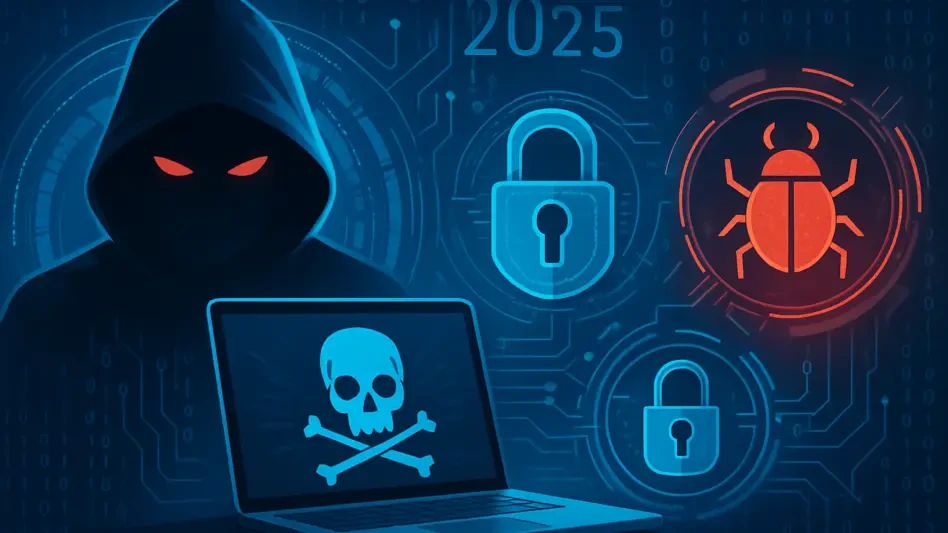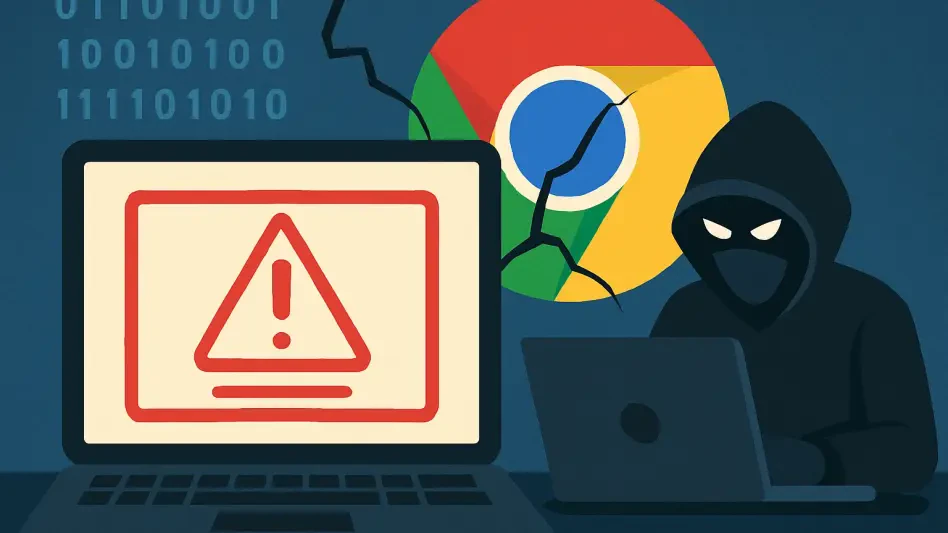In an era where digital networks underpin nearly every facet of daily life, a staggering statistic emerges: the average cost of a data breach in the United States has reached $10 million this year, highlighting the severe financial impact of cybercrime. This alarming figure, coupled with relentless cyberattacks targeting critical infrastructure and government systems, paints a dire picture of national vulnerability. As reported by various industry analyses and government updates, the U.S. faces an unprecedented wave of cyber aggression from nation-states and criminal groups alike. This roundup gathers insights, opinions, and recommendations from multiple sources, including government committees, cybersecurity firms, and sector-specific analyses, to unpack the scope of these threats and explore actionable strategies for resilience in an increasingly hostile digital landscape.
Unpacking the Cyber Crisis: Diverse Perspectives on Urgency
The consensus across multiple cybersecurity reports is clear: the surge in cyberattacks represents a critical national security challenge. A prominent government committee snapshot reveals that approximately 70% of cyberattacks this year have targeted vital sectors like manufacturing, finance, and energy, causing widespread disruptions. Industry observers note that the real-world impact, such as ransomware attacks paralyzing local governments in states like Minnesota and Texas, underscores the immediate need for enhanced defenses.
Differing views emerge on the root causes of this vulnerability. Some industry analyses point to systemic issues, including outdated technology in critical infrastructure, as a primary weak point exploited by adversaries. Others, including government assessments, emphasize external threats, highlighting a 150% spike in cyber espionage from certain nation-states over recent years. These contrasting perspectives suggest a dual challenge of internal upgrades and external deterrence, prompting a broader discussion on resource prioritization.
A third angle, often raised by private sector cybersecurity firms, focuses on the timing of this crisis. With federal government operations hampered by shutdowns and key legislation on information sharing having lapsed, many argue that the U.S. is ill-prepared to coordinate a unified response. This blend of opinions sets the stage for a deeper dive into specific threat categories, as various stakeholders weigh in on the most pressing dangers and potential solutions.
Exploring the Threat Landscape: Insights from Multiple Angles
Nation-State Aggression: A Global Concern
Government reports and international security analyses consistently identify nation-state actors as the most formidable cyber adversaries. Operations attributed to countries like China, Iran, Russia, and North Korea have intensified, with one notable breach involving major telecommunications providers, potentially compromising data from millions of Americans. Data aggregated from various sources indicates a sharp rise in espionage efforts, with some nations showing a 133% increase in attack frequency since last year.
Security think tanks offer a geopolitical lens, suggesting that these attacks are often motivated by strategic goals, such as undermining economic stability or influencing political processes. However, opinions diverge on response strategies. While some advocate for stronger diplomatic measures to hold perpetrators accountable, others warn that attribution remains a complex hurdle, risking escalation if missteps occur. This debate highlights a critical gap in international cyber norms.
Cybersecurity vendors add another layer, emphasizing the technological sophistication of these state-backed operations. Reports indicate persistent access to compromised systems for months, a tactic that maximizes damage and intelligence gathering. Across sources, there is agreement that countering such threats requires not just technical defenses but also robust global alliances to deter aggression effectively.
Critical Infrastructure: A Shared Vulnerability
Analyses from both government bodies and private sector assessments reveal that critical infrastructure remains a prime target, with sectors like energy and finance bearing the brunt of attacks. Incident reports from various states show that ransomware has triggered operational shutdowns, often leading to emergency declarations in affected regions. This widespread impact has prompted urgent calls for sector-specific safeguards.
Opinions vary on the best approach to protect these vital systems. Some industry leaders argue for increased federal funding to modernize outdated technology, citing examples of legacy systems as easy entry points for attackers. In contrast, local government feedback often stresses the need for accessible training and resources, as smaller entities lack the capacity to implement complex solutions independently. This disparity in capability fuels ongoing discussions on equitable support.
Economic analyses further illuminate the stakes, pointing to cascading effects beyond immediate downtime. The potential for broader national security risks, should key sectors remain unprotected, is a recurring concern across multiple reports. There is a shared recognition that public-private collaboration must play a central role in fortifying these essential services against persistent threats.
AI-Driven Attacks: Innovation as a Double-Edged Sword
The role of artificial intelligence in amplifying cyber threats is a hot topic among technology experts and security analysts. Data from industry studies shows that AI-driven breaches account for one in six data compromises this year, with adversaries using automation to scale their attacks. Examples include sophisticated infiltrations into corporate systems, often orchestrated by state actors leveraging cutting-edge tools.
Differing perspectives arise on the pace of defensive adaptation. Some cybersecurity firms express concern that current measures lag behind the rapid evolution of attack tactics, citing regional variations like judicial system breaches in the U.S. as evidence of unpreparedness. Others remain optimistic, highlighting ongoing investments in AI-based detection systems as a potential countermeasure, though they caution that deployment must accelerate.
Projections from various sources suggest that these innovative threats will only intensify in the coming years, particularly as decentralized criminal groups adopt similar technologies. A common thread across opinions is the urgent need for updated frameworks to address this technological arms race. Without proactive measures, many fear that the gap between offensive and defensive capabilities will widen dangerously.
Systemic Challenges: Political and Legal Hurdles
Government assessments and policy analyses pinpoint internal barriers as a significant obstacle to cybersecurity. The ongoing federal shutdown and expired laws on threat intelligence sharing have created critical blind spots, limiting collaboration with industry partners. This systemic flaw is widely criticized as a preventable setback in an already strained environment.
State and local perspectives add depth to this issue, with many officials noting a stark lack of funding and expertise at lower governance levels. Policy experts propose legislative renewals, such as new acts to bolster coordination, but opinions differ on feasibility amid political gridlock. Some argue for immediate emergency measures, while others advocate for long-term structural reforms to ensure sustainable progress.
Speculation across sources suggests that prolonged inaction could exacerbate vulnerabilities, leaving the nation exposed to escalating risks. A recurring recommendation is the reallocation of resources to prioritize cyber defense at all levels of government. This chorus of voices underscores the complexity of aligning political will with urgent security needs in a fractured landscape.
Key Takeaways from the Cyber Threat Discussion
Synthesizing insights from diverse sources, several core themes emerge. The scale of nation-state attacks, particularly against critical infrastructure, stands out as a unifying concern, with financial losses averaging millions per incident. Government and industry alike stress the vulnerability of essential sectors and the innovative tactics, like AI automation, employed by adversaries.
Practical recommendations vary but converge on a few actionable steps. Many advocate for stronger public-private partnerships to bridge resource gaps, while others push for legislative action to restore federal coordination capabilities. State-level training programs also receive broad support as a means to empower local entities facing disproportionate risks.
A notable point of agreement is the importance of staying informed through regular updates from security committees and adopting sector-specific resilience strategies. These collective insights provide a roadmap for stakeholders navigating this complex threat environment, emphasizing adaptability and collaboration as key pillars of defense.
Reflecting on the Path Forward
Looking back on the discussions that unfolded, the multifaceted nature of cyber threats became evident through the varied perspectives shared by government bodies, industry experts, and local officials. Each source contributed unique angles, from the geopolitical drivers of nation-state attacks to the operational struggles of under-resourced municipalities, painting a comprehensive picture of a nation under digital siege.
Moving ahead, actionable steps emerged as a focal point. Prioritizing legislative reforms to reinstate critical information-sharing mechanisms stood out as a pressing need, alongside targeted investments in modernizing infrastructure. Fostering cross-sector collaboration also gained traction as a vital strategy to pool expertise and resources effectively.
Beyond immediate fixes, a longer-term consideration surfaced: embedding cybersecurity as a cornerstone of national policy. Encouraging stakeholders to explore emerging frameworks and participate in ongoing dialogues ensures that defenses evolve alongside threats. This collective resolve to act, informed by diverse insights, offers a foundation for safeguarding the digital frontier in the years ahead.








